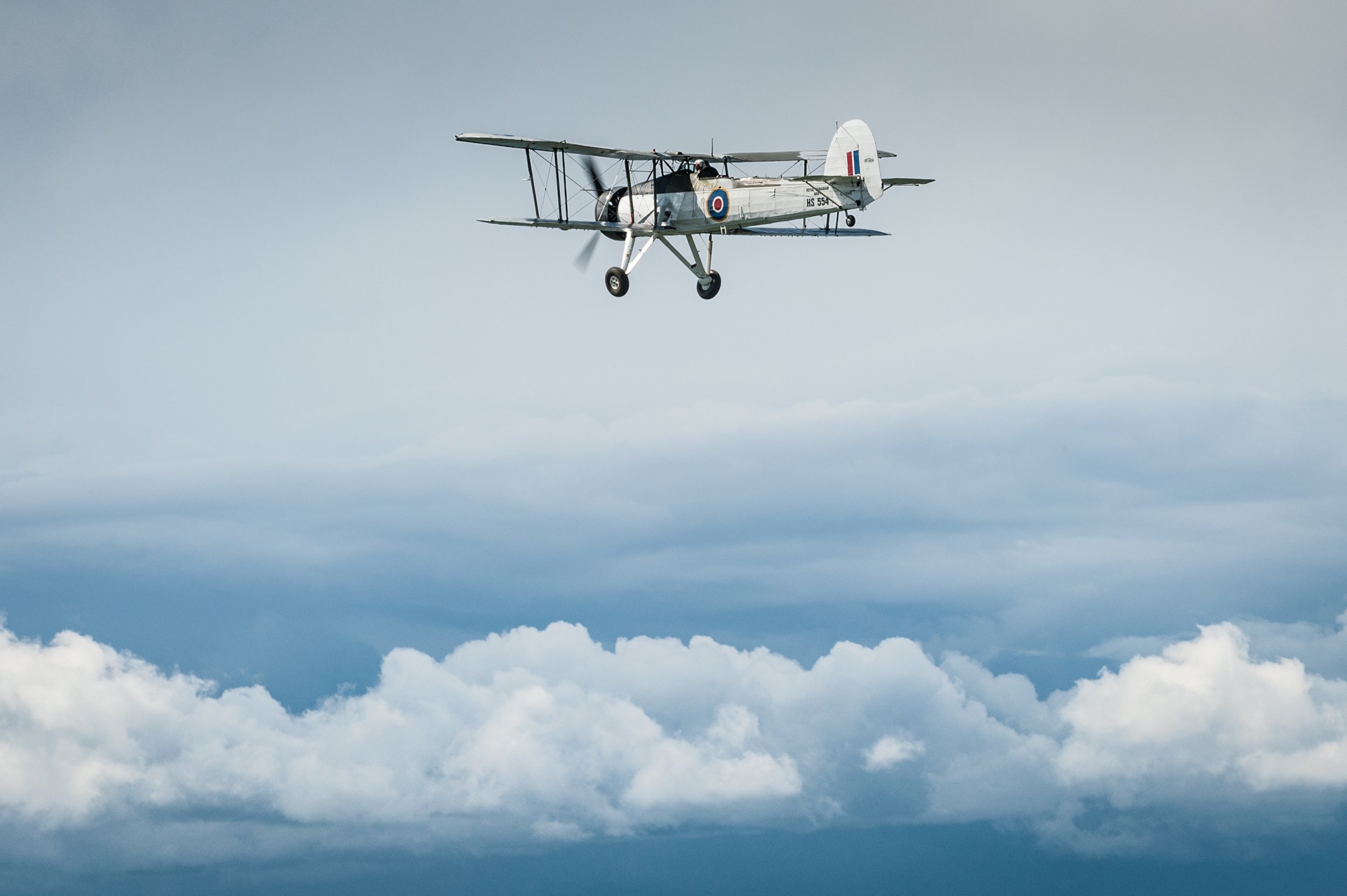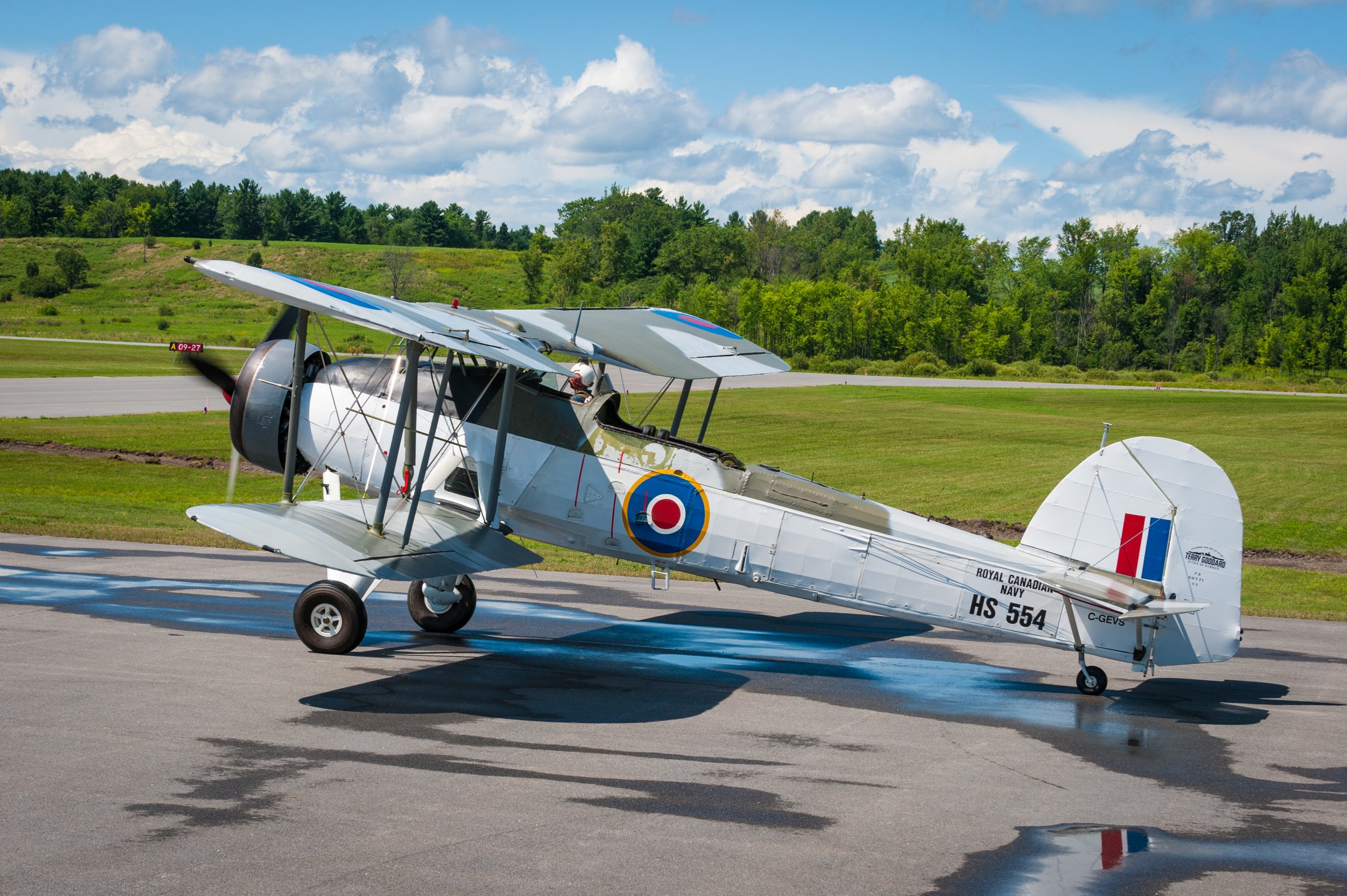
The Commander Terry Goddard
FAIREY SWORDFISH III
PETER HANDLEY PHOTO
Michael U. Potter Historic Aircraft Collection
Fairey Swordfish III, Royal Canadian Navy
The Vintage Wings of Canada Swordfish was dedicated to the late Commander Terry Goddard, DCS, Royal Canadian Navy, a Swordfish observer who flew with 808 Squadron of the Royal Navy’s Fleet Air Arm and participated in the action against the German battleship Bismarck and was witness to the blow that eventually led to her sinking in the North Atlantic. Goddard’s war ranged from the North Atlantic to the Mediterranean to the Indian Ocean.
The Fairey Swordfish was a torpedo bomber built by the Fairey Aviation Company and used by the Fleet Air Arm of the Royal Navy during the Second World War. Affectionately known as the "Stringbag" by its crews, it was outdated by 1939, but achieved some spectacular successes during the war, notably the sinking of one and damaging two battleships of the Regia Marina (the Italian Navy) in the Battle of Taranto and the famous crippling of the Bismarck. It was operated primarily as a fleet attack aircraft; however, during its later years, it was also used as an anti-submarine and training craft. Designed in the 1930s, the Swordfish outlived several types intended to replace it, and remained in front line service until VE Day.
Despite the fact that it was slow, and lacked adequate defense, the Fairey Swordfish was considered one of the most important naval aircraft of the Second Word War. It was the only Allied aircraft in continuous production from (1934) before the start of hostilities to the end of the war. Originally designed as a reconnaissance aircraft for the Royal Navy’s Fleet Air Arm, this lumbering biplane anachronism flew on into the era of high-performance monoplanes and even jets and achieved phenomenal success.
Sold in 2019 to White Waltham Airfield Limited of Maidenhead, Berkshire, United Kingdom where it will become the third flyable Swordfish in Great Britain.
Peter Handley Photo
Peter Handley Photo
Adam Smith Photo
Adam Smith Photo
Adam Smith Photo
Adam Smith Photo
Richard Mallory Allnutt Photo
Gus Corujo Photo
Eric Dumigan Photo
Gus Corujo Photo
Gus Corujo Photo
Peter Handley Photo
Peter Handley Photo
Peter Handley Photo
Richard Mallory Allnutt Photo
Richard Mallory Allnutt Photo
Richard Mallory Allnutt Photo
Richard Mallory Allnutt Photo
Richard Mallory Allnutt Photo
Richard Mallory Allnutt Photo
Richard Mallory Allnutt Photo
Richard Mallory Allnutt Photo
Richard Mallory Allnutt Photo
Richard Mallory Allnutt Photo


























